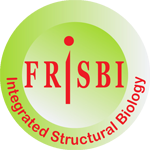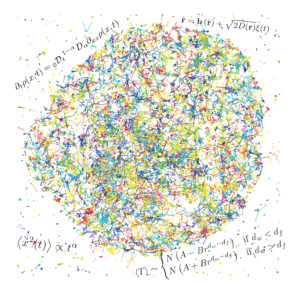The 3rd France BioImaging Annual Meeting was held at the Institut Curie (PARIS), the 17th and 18th of September 2015. It gathered more than 200 attendees from all the FBI community and beyond. This year, the FBI-AM started by a few hours Community Meeting. During this session the national coordination (M. Coppey and J. Salamero) made a short report of the last year and an half, on main activities performed by and within FBI. A more general and open debate with the audience and in particular with representatives of the National Advisory and National User committees, followed. A number of crucial issues concerning next steps in FBI building and sustainability, its transparency, as well as information on a number of governance adjustments made over the last year, were evoked. Now that FBI entered in its functioning part (since end of 2014), a stronger effort should be made to the operation of the Infrastructure. This morning session was completed the day after by a short presentation (D. Choquet) of FBI participation to H2020 calls (Europe Group) and involvement in the Euro BioImaging ESFRI project. Then, the Scientific part of the Meeting started with an exciting and fascinating conference by E. Betzig (Laureate of the Nobel Prize of Chemistry 2014), mainly covering the latest progresses in High Space-Time Resolution microscopy and emphasizing the power to combine Light Sheet and Structured Illumination Microscopy (Lattice Light Sheet Microscope)
WP1 a (SPT-Super Resolution)
Clemens Kaminski (Cambridge, UK) was the external invited speaker of this session. His work and presentation focused on the use of nanoscopy approaches to decipher molecular mechanism of disease and in particular on protein misfolding and aggregation in neurodegeneration. One WP1a Group in Bordeaux node showed that using well-designed optical lattices for depletion together with wide-field excitation and a fast camera for detection, large parallelization of STED nanoscopy is achievable (700 doughnuts). In this context polarization effects were thoroughly studied. Another one showed how a single high numerical aperture objective can be used to produce an excitation light sheet perpendicular to the optical axis for optimal sectioning and high background rejection (soSPIM for single objective Selective Plane Illumination Microscopy). soSPIM imaging applications, from whole drosophila embryos down to the single cell level with single molecule detection sensitivity up to 30 µm inside the sample, illustrated the performance of this new technology. The final presentation covered the mechanisms of DNA segregation in bacteria, which is a critical process for the faithful inheritance of genomic information for all life forms. The positioning, organization and transport of the underlying molecular components were revealed by super-resolution microscopy techniques including 3D SIM, PALM and optical deconvolution.
WP1 b (Multimodal & Quantitative Fluorescence Microscopies)
After a quick presentation of the group, this session hosted guest speaker Gerard Marriott (UC Berkeley) who presented new developments of fluorescent probes optimized for fluorescence anisotropy and FRET microscopies. He emphasized on the advantages of using fluorescence anisotropy to detect biomolecular interactions in live cells thanks to its ability to report associated changes in protein complexes rotational diffusion. His talk was followed by three short talks from WG1 b members describing recent study of G-protein coupled receptors GABA(B) oligomerization using multiphoton scanning imaging coupled with Number & Brightness analysis method, advances and applications of polarization-resolved microscopy to unravel structural information in live cells and results on the molecular mechanisms of rigidity sensing at focal adhesions using fluorescence fluctuation spectroscopy and FLIM-FRET imaging.
The session was introduced by Y. Schwab, Group Leader and EM-facility Head at EMBL, Heidelberg. During his talk he described, among other approaches and applications, the “full-Correlative Light Electron Microscopy” strategy his team developed to image single tumor cell within living animals and how to correlate it at the EM scale with the contextual environment. Members of the WP1c then showed diverse ongoing developments and applications on CLEM approaches, emphasizing the interest 1) of Focus Ion Beam-SEM technique 2) to automate sample preparation and preservation 3) to introduce BioImage Informatics in the CLEM workflow 4) and to enlarge the “bottle neck” of the massive data sets generated by high resolution 3D EM.
WP1 d (New Contrast & In-Depth Imaging)
This working group invited Prof Dan Oron from the Weizmann Institute of Science (Rehovot, Israel) that gave a presentation on semiconductor nanocrystals as new probes for nonlinear imaging in deep tissues. These new crystals show promising properties and can lead to new contrast mechanism such as upconversion. Four highlights have been presented by WG1d group leaders on fast imaging in brain using acousto-optics, multicolor multi-photon imaging in brain and the use of fibers for single and multiphoton imaging. Although the WG1d is still active in multiphoton nonlinear developments, it is working on a new direction to develop fiber probes and endoscopes to provide ultra-short pulses at the sample plane and to collect the backscattered nonlinear signals. Applications are foreseen primarily in neurobiology for deep brain investigation.
In this session, two external speakers were invited to give talks. First speaker of the session was Rafael Carazo Salas, group leader at Cambridge University, and a major figure in the European HCS landscape. He spoke about his efforts to systematically study fundamental cellular processes in yeast, such as cell division, regulation of the cytoskeleton and morphogenesis, with a focus on the link between these processes. He also presented a very recent study on using HCS for pathway reconstruction by specifically probing for the influence of gene knockouts on protein localization. Second speaker was Xavier Gidrol, director of research at CEA Grenoble, where he leads the Biomics lab. He spoke about more translational aspects of High Content Screening, focusing on the study of proliferation / differentiation balance in carcinogenesis, for which he uses “lensfree” imaging.
The session was completed by three short talks from the WG2 presenting the RUSH system, which is a scalable assay design for the study of protein trafficking andan application of this system for the identification of chemical inhibitors of protein transport, strategies for large scale studies in the field of spatial transcriptomics, i.e. the study of transcript localization in cells and Bioimage Informatics approaches for phenomics, i.e. tools for the computational analysis of HCS data.
WP3 (Probe Devpt, Optomanipulation & Optogenetics)
The purpose of the session was to provide an overview of the current activity covered by the chemists of the WP3. Eleven speakers from both inside or outside of the FBI INBS gave flash presentations focused on one specific work, from development on new fluorescent proteins for Super Resolution Localization Microscopy up to the use of lanthanides for NIR imaging in animals. This “Chemist in Action” speed dating is summarized in a small booklet (
see the Booklet WP3).
WP4 (Bioimage Informatics – Image Processing & Data Management)
As an external lecturer, Erik Meijering (Erasmus Univ, Rotterdam) presented the “community effort” made in the “BioImage Analysis” area over the last years. He described different types of “challenges” aimed at comparing tracking image processing and analysis methods, on simulated data sets and also on real data sets. The comparative results using a number of criteria are made publically available some are published in peer reviewed journals and provide the backbone of future integrated methods for image analysis. Three groups of FBI WP4 speakers followed who 1) illustrated new developments in Bioimage-Informatics aimed at quantifying dynamic activities in single cells, 2) presented concerns on the “Image Life Cycle” in the FBI community and an “Icy community” report. Finally 3), two “user-cases” of the software and analysis tools provided through the FBI infrastructure, were presented.
WG5 a (Training, Education)
WG5 b (Dissemination; e-Communication, Tech transfer)
Working Group 5 is now separated in two parts. “Dissemination and communication” are primary responsibilities of the coordination, while “training and education” actions should be shared and promoted by the overall community. Following comments from our Scientific Advisory Board ( March 2014), FBI was very active this last year and an half, as testified by an increasing number of FBI presentation, participation, organization and support of conferences, workshops, training courses in our area of interest (MIFOBIO, RTs, FBI-AT, SMLMS, EuBIAS, QBI…) and beyond (SBCF, FEBS-EMBO, ITMO-TS…). Multiple examples illustrating these past and future activities were presented by FBI members. A “technology transfer” strategy will have to be defined in the near future through the rules of the “Consortium Agreement” (signed by all Parties in summer 2015).

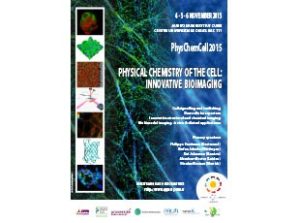
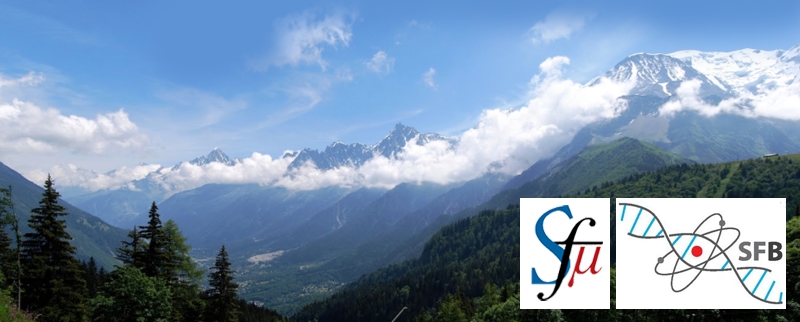

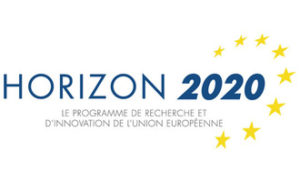 This last Year, France BioImaging was deeply involved in the building of H2020 infrastructure projects, within the context of the Euro-BioImaging ESFRI project. D. Choquet (Bordeaux) and PF. Lenne (Marseille) are our official representatives at the EuBI Interim Board, with Daniel Boujard for the CNRS (see
This last Year, France BioImaging was deeply involved in the building of H2020 infrastructure projects, within the context of the Euro-BioImaging ESFRI project. D. Choquet (Bordeaux) and PF. Lenne (Marseille) are our official representatives at the EuBI Interim Board, with Daniel Boujard for the CNRS (see 